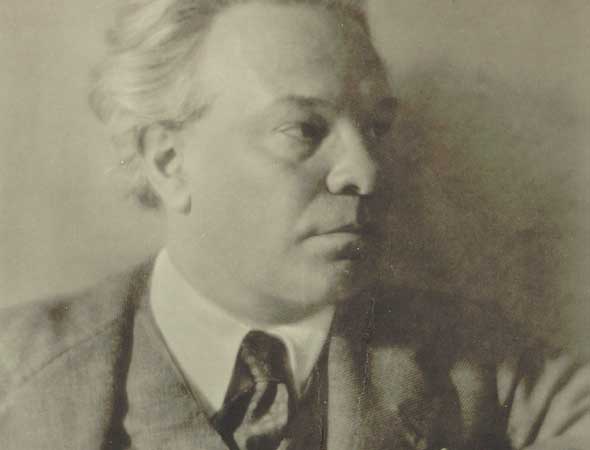RESPIGHI – Pines of Rome

Ottorino Respighi | Ghitta Lorell [Public domain], via Wikimedia Commons
Instrumentation: 3 flutes, 3 oboes, 3 clarinets, 3 bassoons; 4 horns, 3 trumpets, 3 trombones, tuba; strings; percussion.
Born in 1879, the Bolognese master Ottorino Respighi lived most of his life in the 20th century (he died in 1936). But in the charm and tonal elegance of his music we can hear 19th– and 20th-century esthetics colored by his infatuation with earlier days: music of the late renaissance and early baroque periods, from the 16th through the 18th centuries. Respighi’s music is graceful, courtly and opulent; it often seems to iridesce with shifting colors. The rhythms are whirling or stately. The sound beguiles us like an antique music box.
Respighi began his career as a violinist and violist, studying first with this father and then at the Liceo Musicale in Bologna, but historical and composition studies were also included in his curriculum. After graduating in1899, he became principal violist in the orchestra of the Russian Imperial Theatre in St. Petersburg. There he studied composition with Rimsky-Korsakov, one of the great masters of orchestral color, whose influence can be heard in all of Respighi’s most popular works. Returning to Italy, he became first violinist in the Mugellini Quintet, but devoted himself mainly to composing from 1909 onward.
“The Pines of Rome” is the second of Respighi’s three most popular orchestral suites, which also include “The Fountains of Rome” and “Roman Festivals.” All three showcase his gift for creating music that seems vividly and specifically visual, a goal sought by many of the baroque composers he so admired. In the first movement of “The Pines,” we are treated to a view of the sumptuous Villa Borghese, where rambunctious children are playing and soldiers are marching amid the pines. Next we are transported to a subterranean catacomb in Campagna, with its eerie vaults and priestly chanting deftly evoked by low orchestral voicing, organ and trombones. In the third movement, the nocturnal feeling is accented by the sound of a nightingale among the pines of Janiculum Hill.
As Respighi’s Roman travelogue progresses, we realize that not only has he transported us through the city of Rome, but through a day as well: starting with children at play on a sunlit afternoon, through the night, and finally to the Via Appia, where “The Pines of Rome” ends in the brilliance of a Roman sunrise.











